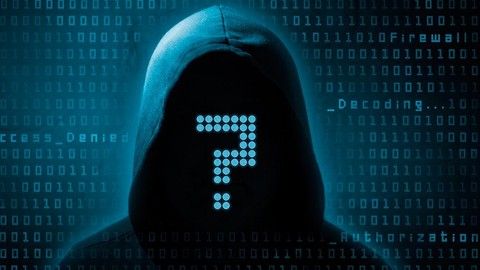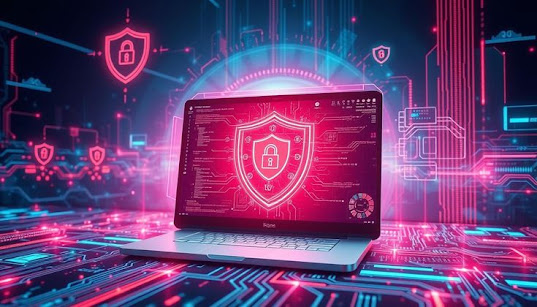Cyber Hygiene Checklist for 2025: Is Your Online Safety a Reality?
Introduction
New technological developments and increasingly complex cyberthreats have arrived in 2025. As cloud-based systems, 5G, IoT, and artificial intelligence become more integrated into our daily lives, maintaining proper cyber hygiene becomes imperative rather than optional.
Everything you require to maintain your online safety is covered in this extensive guide. In 2025, maintaining good cyber hygiene calls for a proactive and informed approach; it is no longer just about installing antivirus software.
A. Knowing About Cyber Hygiene
The actions and procedures users take to preserve system integrity and enhance security are referred to as cyber hygiene. Consider it similar to brushing your teeth: minor behaviors carried out regularly to prevent bigger issues.
Why 2025 Will See a Greater Need for Cyber Hygiene
-
Cyberattacks using AI are becoming more common.
-
As remote and hybrid work persists, new vulnerabilities are revealed.
-
Although they are more prevalent, smart home appliances are rarely secure.
-
These days, social engineering and phishing attacks are extremely customized.
This comprehensive checklist will help you and your company stay on top of these challenges.
B. Device Protection: The First Line of Protection
1. Maintain Device Updates
-
Make sure your operating system, applications, and drivers are set to update automatically.
-
Remember to manually check router and Internet of Things device firmware updates by setting reminders.
2. Employ Reliable Antivirus and Anti-Malware Software
-
Make use of real-time, lightweight protection tools.
-
Check devices once a week and after any questionable activity.
3. Make firewalls active
-
Firewalls built into the OS are crucial.
-
For additional security, use a network-level firewall.
4. Eliminate Unused Software and Apps
-
Software that is unused or outdated may be exploited.
-
Regularly review installed apps and remove unnecessary ones.
C. Network and Wi-Fi Sanitization
1. Make sure your network is secure
-
Employ WPA3 encryption.
-
Make use of WPA3 encryption.
-
If your SSID is not required for visitors, hide it.
2. Create a Network of Visitors
-
Guests and smart devices should be connected to a different network than work devices.
3. Make use of a virtual private network, or VPN.
-
Especially important on public Wi-Fi.
-
Choose trusted VPN services that don’t log your activity.
D. Strong Authentication Practices
1. Use Strong, Unique Passwords
-
Avoid names, birthdays, or repeated characters.
-
Use a mix of upper/lowercase, numbers, and symbols.
2. Adopt a Password Manager
-
Manage and generate complex passwords securely.
-
Don’t reuse passwords across platforms.
3. Enable Multi-Factor Authentication (MFA)
-
Always turn on MFA for banking, emails, cloud services, and social media.
E. Email and Communication Safety
1. Watch for Phishing Attacks
-
Look out for misspelled URLs and suspicious attachments.
-
Never click unknown links in emails or texts.
2. Verify Senders
-
Double-check unexpected emails, especially if they request urgent actions.
3. Use Encrypted Communication
-
Use end-to-end encrypted apps like Signal or WhatsApp.
-
Encrypt email content if you share sensitive data.
F. Social Media and Personal Data
1. Limit What You Share Online
-
Don’t reveal location, travel plans, or financial details.
-
Think before sharing personal photos or updates.
2. Tighten Privacy Settings
-
Review who can see your posts, stories, and contact info.
-
Turn off location tracking unless necessary.
3. Be Cautious with Third-Party Apps
-
Don’t link social media to unknown or unnecessary apps.
G. Cloud and File Management
1. Secure Your Cloud Accounts
-
Use MFA on Google Drive, Dropbox, iCloud, etc.
-
Don’t store passwords or financial information in plain text.
2. Encrypt Sensitive Files
-
Before uploading sensitive files to the cloud, encrypt them with tools like VeraCrypt.
3. Backup Regularly
-
Use both physical (external drives) and cloud-based backups.
-
Follow a 3-2-1 strategy: 3 copies, 2 types of storage, 1 offsite.
H. IoT and Smart Devices Hygiene
1. Change Default Credentials
-
Never leave the default username and password on smart cameras, thermostats, etc.
2. Update Firmware Regularly
-
Many smart devices don’t auto-update — check for updates manually.
3. Segment Your Network
-
Keep IoT devices on a separate subnet from laptops and phones.
I. Browser and Search Engine Safety
1. Use Privacy-Focused Browsers
-
Try Brave, Firefox, or DuckDuckGo.
-
Regularly clear cookies and cache.
2. Install Security Extensions
-
Use HTTPS Everywhere, Privacy Badger, and uBlock Origin.
3. Avoid Auto-fill for Passwords
-
Use password managers instead of browser-based auto-fill.
J. Digital Financial Hygiene
1. Monitor Your Accounts Regularly
-
Use alerts for logins, withdrawals, and balance drops.
2. Use Virtual Cards for Online Purchases
-
Some banks offer disposable cards to prevent fraud.
3. Avoid Saving Payment Info on Shopping Sites
-
Always prefer manual entry or payment gateways like PayPal.
K. Cyber Hygiene at Work
1. Use Secure Collaboration Tools
-
Choose platforms with end-to-end encryption for meetings and files.
2. Limit Administrator Access
-
Only grant admin privileges when absolutely needed.
3. Educate Employees
-
Conduct regular training on phishing, ransomware, and password safety.
L. Child and Teen Safety Online
1. Use Parental Controls
-
Set up screen time limits and filter content.
2. Educate, Don’t Just Restrict
-
Teach children about cyberbullying, scams, and safe online behavior.
3. Monitor App Downloads and Usage
-
Review their devices weekly to ensure safe app usage.
M. Responding to Threats and Breaches
1. Have an Incident Response Plan
-
Know what to do if your account is hacked or data is leaked.
2. Check for Data Leaks
-
Use services like HaveIBeenPwned.com to monitor email breaches.
3. Change Credentials Immediately
-
If you suspect a breach, change all related passwords and inform services.
N. Cyber Hygiene for Seniors
1. Simplify Tools
-
Use security software with intuitive interfaces for older users.
2. Teach Safe Habits
-
Focus on recognizing scams, avoiding pop-ups, and not sharing personal info.
3. Install Automatic Updates
-
Make systems as hands-off and secure as possible.
O. Cyber Hygiene Myths to Avoid
1. “I Don’t Need Antivirus on Mac”
-
Macs are not immune — attacks target all operating systems.
2. “I Have Nothing to Hide”
-
Privacy is not about hiding but protecting your identity and safety.
3. “It Won’t Happen to Me”
-
Every internet user is a target, whether for data, money, or identity theft.
P. Cybersecurity Tools Worth Using in 2025
-
Password Managers: Bitwarden, 1Password, NordPass
-
VPNs: ProtonVPN, ExpressVPN, Mullvad
-
Antivirus/Anti-malware: Malwarebytes, Windows Defender, ESET
-
Encryption Tools: VeraCrypt, AxCrypt
-
Privacy Browsers: Brave, Firefox
-
Security Extensions: HTTPS Everywhere, Privacy Badger, uBlock Origin
-
Dark Web Monitoring: Aura, Identity Guard
Q. Staying Informed
Cyber threats evolve rapidly. Make a habit of:
-
Following cybersecurity blogs and podcasts.
-
Reading security newsletters (like KrebsOnSecurity, The Hacker News).
-
Signing up for alerts from your antivirus provider or CERT (Computer Emergency Response Team).
Conclusion: Are You Really Safe Online?
Cyber hygiene in 2025 is a daily discipline, not a one-time fix. With the rising tide of AI-led attacks, digital impersonation, and privacy erosion, now is the time to secure your digital life.
By following this checklist, you’ll reduce your risk significantly and gain peace of mind. Whether you're a student, business owner, remote worker, or tech-savvy parent, cyber hygiene is your responsibility and your best line of defense.
Would you like this turned into a downloadable checklist or infographic for your blog readers?




Comments
Post a Comment